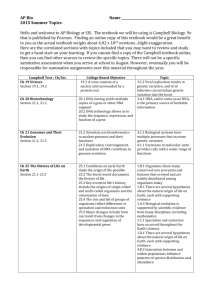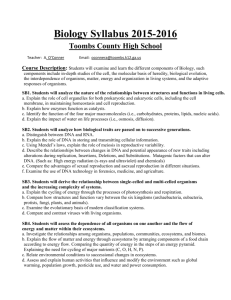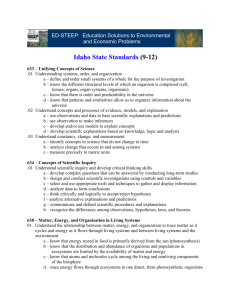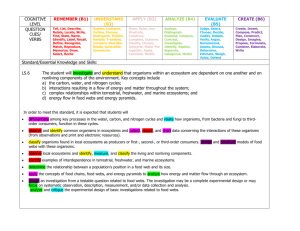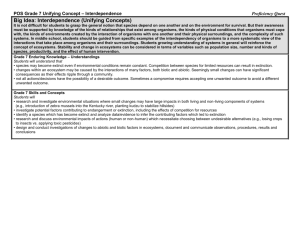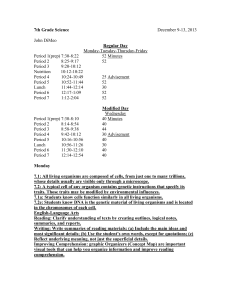BiologyCurriculum 14 - Woodland Public Schools
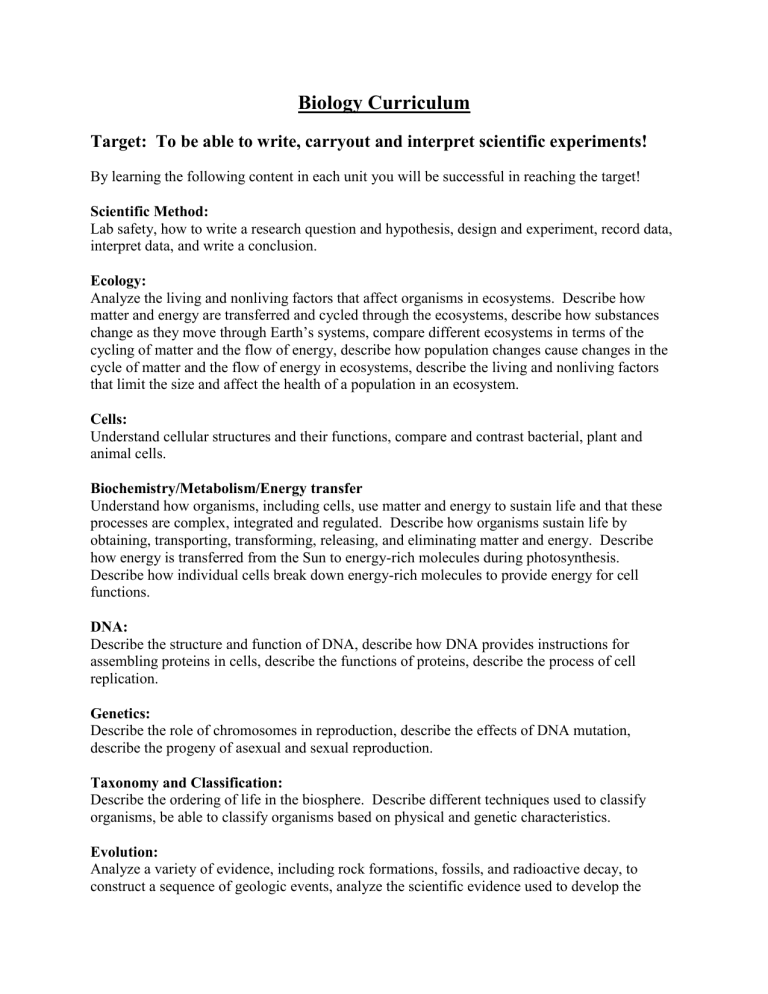
Biology Curriculum
Target: To be able to write, carryout and interpret scientific experiments!
By learning the following content in each unit you will be successful in reaching the target!
Scientific Method:
Lab safety, how to write a research question and hypothesis, design and experiment, record data, interpret data, and write a conclusion.
Ecology:
Analyze the living and nonliving factors that affect organisms in ecosystems. Describe how matter and energy are transferred and cycled through the ecosystems, describe how substances change as they move through Earth’s systems, compare different ecosystems in terms of the cycling of matter and the flow of energy, describe how population changes cause changes in the cycle of matter and the flow of energy in ecosystems, describe the living and nonliving factors that limit the size and affect the health of a population in an ecosystem.
Cells:
Understand cellular structures and their functions, compare and contrast bacterial, plant and animal cells.
Biochemistry/Metabolism/Energy transfer
Understand how organisms, including cells, use matter and energy to sustain life and that these processes are complex, integrated and regulated. Describe how organisms sustain life by obtaining, transporting, transforming, releasing, and eliminating matter and energy. Describe how energy is transferred from the Sun to energy-rich molecules during photosynthesis.
Describe how individual cells break down energy-rich molecules to provide energy for cell functions.
DNA:
Describe the structure and function of DNA, describe how DNA provides instructions for assembling proteins in cells, describe the functions of proteins, describe the process of cell replication.
Genetics:
Describe the role of chromosomes in reproduction, describe the effects of DNA mutation, describe the progeny of asexual and sexual reproduction.
Taxonomy and Classification:
Describe the ordering of life in the biosphere. Describe different techniques used to classify organisms, be able to classify organisms based on physical and genetic characteristics.
Evolution:
Analyze a variety of evidence, including rock formations, fossils, and radioactive decay, to construct a sequence of geologic events, analyze the scientific evidence used to develop the
theory of biological evolution and the concepts of natural selection, speciation, and biological diversity. Describe what factors contribute to speciation, describe the factors that drive natural selection, explain how natural selection and adaptation lead to organisms well suited for survival in particular environments, examine the degree of evolutionary relationship between organism based on biochemical, anatomical, or fossil record similarities and differences.
Bioethics/Biotechnology:
Analyze how scientific knowledge and technological advances discovered and developed by individuals and communities in all cultures of the world contribute to change in societies.
Analyze how the scientific enterprise and technological advances influence and are influenced by human activity. Analyze the scientific, mathematical, and technological knowledge, training, and experience needed for occupational/career areas of interest.

